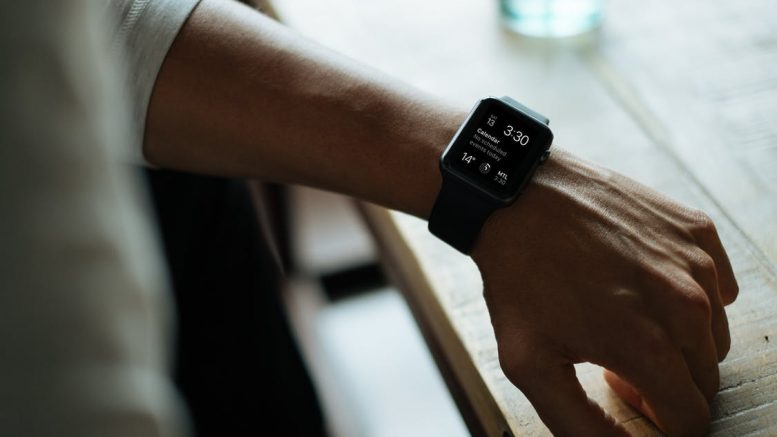When someone mentions a “wearable”, people inevitably first think of a fitness tracker such as a Apple Watch or a Fitbit. And with good reason – these wrist-worn devices were created to integrate flawlessly into the wearers daily life. The question is, would they work for a medical vest design?
The wrist is a good spot to collect basic personal fitness data using Inertial Measurement Unit Sensors (IMUs will track your activity in steps, and Heart Rate in terms of BPM), though research has proven that not all sensors used in fitness trackers collect accurate data.
Despite this, and due to the popularity and convenience of wrist-wear, there are more and more Medical and Home Health Technologies being designed for the wrist. While the purpose of Medical Grade wearables varies from device to device, it begs the question: should we be collecting/tracking data for medical analysis from the wrist?
Don’t Get Us Wrong:
There’s absolutely nothing wrong with using a personal fitness tracker – this data is used for your personal goals, and if it isn’t precise, it isn’t the end of the world. However, when it comes to data tracking for clinical reasons, precision and a constant stream can make a difference between life and death in certain cases.
Tracking vitals from other points on the body by using a soft-sided vest, strap, or harness could not only mean more accurate data, but could also provide further insights and open the door to innovative and regulated treatment.
Here’s a Few of the Best Reasons to Utilize the Vest Approach:
Most Accurate Data.
Ultimately and inarguably, you are going to get the most precise data from the source. Developing a wearable that tracks HR directly from the heart/chest area will provide the most accurate data (this is why some people wear chest straps or harnesses at the gym while cardiac training).
Developing a custom product that wraps around the chest for cardiac monitoring, or wraps around the torso and monitors other internal organ processes would give you precision metrics that could not be read by a wrist worn wearable. (An example is the new Medtronic CardioInsight vest, which is outfitted with 250 electrodes surrounding the torso, and is a non-invasive way to track a heart arrhythmia.)
The collection of accurate data is integral to the diagnosis and treatment process, and is potentially even more important for patients who wear the devices 24/7 for home-health tracking. A mis-read can trigger the device to provide an unnecessary response to treat the mis-read, or send a false emergency alert to a medical professional or first responder. Granted, this mistake can happen with any sensor, but tracking from the source increases the likelihood that the most accurate and recent data is being collected.
Do you have an idea for a Medical Wearable vest, harness? Request a quote today!
Utilize the latest Textile Tech.
With the technological leaps and bounds smart textiles are taking, conductive thread and sensor integrations offer infinite potential innovations. Textiles printed with conductive ink removes the need for even thread and cords, lightening the load and making the wearable even more “unawareable“. Partnering and designing with a smart textile manufacturer or a manufacturer that has connections to smart textile companies, allows you to use the latest and most advanced technology. Most smart textiles that are designed for medical use have been designed with specific utilizations in mind, but there are many ways to go about sourcing a textile for medical devices.
Low Profile Design.
Yes, a smartwatch is discreet and low-profile. But with ailment specific wearables coming onto the market, its going to become tougher to fit all of the technology necessary into a wrist-worn device without it becoming bulky, clunky, and inconvenient. Creating a vest or harness allows tech and garment weight to be distributed evenly across the upper body and allowing for sensors to collect data from the source while being comfortably pressed against the skin.
It’s important for the wearer to be able to go about their permitted daily activities with their wearable without inhibiting their movement or performance. Utilizing textile wearables also offers the utmost discretion – these designs are subtle enough to be worn comfortably under clothing without anyone knowing.
Comfort.
Biocompatible, moisture wicking, breathable, and lightweight fabrics are ideal textiles for medical garments. Finding a contract manufacturer such as Fieldtex who has worked with these textiles and has access to suppliers who stock numerous biocompatible options is a good route to take.
Cost.
Depending on the design complexity and manufacturing quantity, working with a cut-and-sew manufacturer on a custom textile product like a medical vest could be cheaper than a hard-material molded wristband.
While this point may not always be true, cost is always important to take into account, especially for startups. With a scaleable product line, Fieldtex is an experienced contract manufacturing partner in the medical garment field that allows your companies lines to grow in tandem with your needs.
Wrist-worn wearables may solve the problem and collect adequate data for personal fitness training, but in terms of medical grade data, collecting directly from the source has the potential to reduce data error, increase patient comfort, and potentially encourage consistent use due to out-of-sight design.
Do you have an idea for a Medical Wearable vest, harness? Request a quote today!
